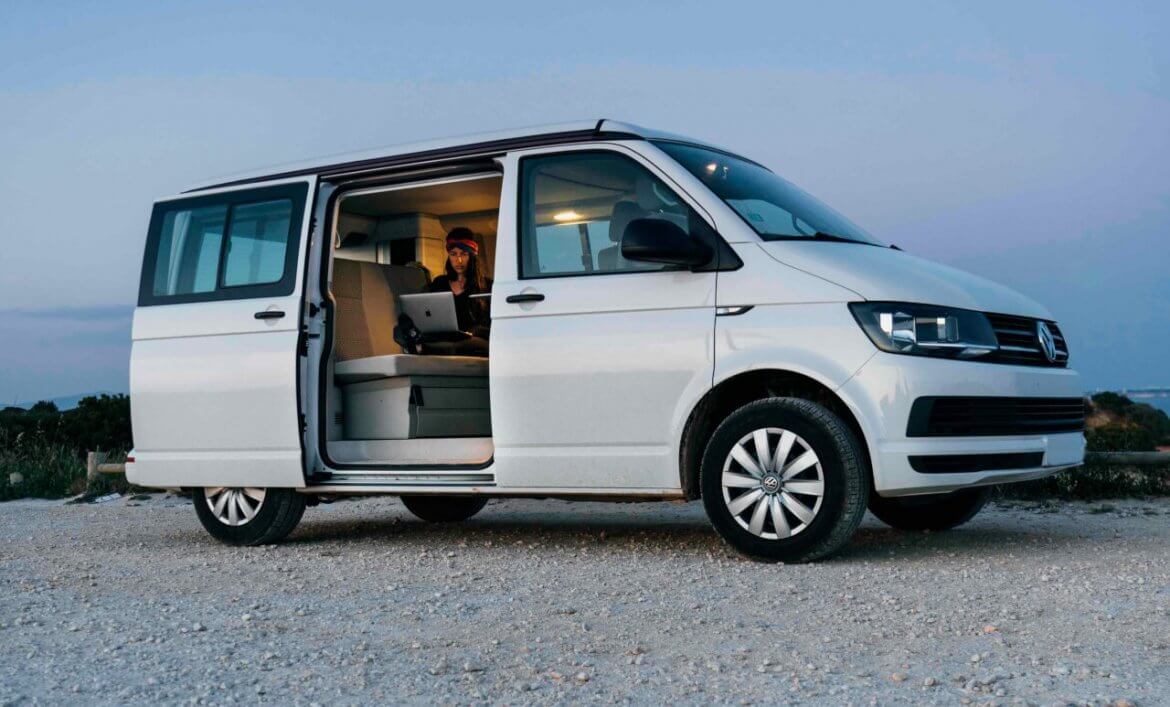It is a lifelong dream for many: travelling around the world in a motorhome. And even if the world only includes Europe,
Germany, or a trip to the sea – The urge to get away is still the same. It’s the longing for freedom and adventure. It does not matter if you are a dropout, who spends their entire life travelling, a retiree doing a trip around the country, a family driving up to the North Sea or just a group of friends having an adventurous weekend trip. Travelling in a motorhome always conveys a certain feeling of freedom, because that’s exactly what it offers.
You are independent. All you need is in your motorhome and you are free to enjoy life. Camping is always about freedom. That’s why motorhomes are so popular, and also the reason that there is a rather complex variety of types. With so many options, you can easily lose track – whether you want to buy or just rent a motorhome. This text shall give you an overview on the most important types, so you can decide which one fits you the most.
Basics
First of all, you need to decide whether you want to rent or buy a motorhome. If you want to rent one, you have probably already planned your vacation, meaning you know where, how, and why you want to travel. This facilitates the search, because you can specifically look for advantages and disadvantages of the different motorhome types. If you want to buy a motorhome, your budget will be a major deciding factor. Your driver’s license is another important one. The police will not care whether you own or just rented the vehicle you are driving. Assuming they even understand the license chaos with motorhomes. Because, to phrase is simply: It’s complicated.
It is relevant at what point in time you completed your driver’s license, as well as the weight of the vehicle. Up to 3.5 tons can be operated with a regular driver’s license. You should always keep that in mind. Now let’s get to the five most popular types of motorhomes.
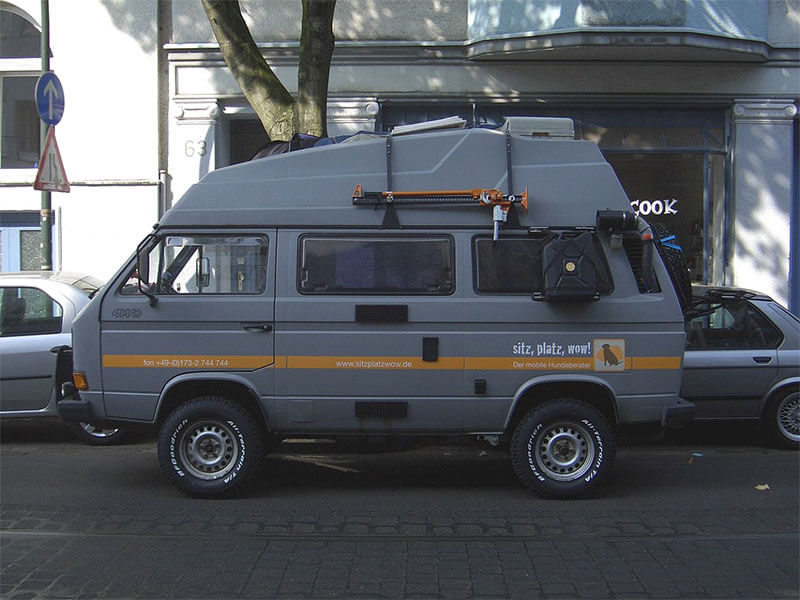
Campingbus, Detectandpreserve, VW T3 Caravelle syncro 1984-1992 sideleft 2008-08-16 A, CC BY-SA 3.0 ( Detectandpreserve, VW T3 Caravelle syncro 1984-1992 sideleft 2008-08-16 A, CC BY-SA 3.0 )
The camping bus – a classic for everybody
Let’s start in the beginning. The first camping buses arose in the 1950s and you are surely familiar with different versions of converted Volkswagen buses. Another famous example are camping buses by Westfalia. You probably know them as the classic hippy-vehicles. A camping bus is the basically the smallest type of motorhome, and therefor offers very little room. On the other hand it also needs less space, which makes it a lot more manageable in traffic situations. Of course this classic is not really for everybody, but mostly for minimalists and young people. It can also be ideal for young couples. Its popularity probably comes from its simplicity in traffic and its status as a classic.
- probably the coolest way to go camping
- low cost, suitable for inner city traffic and everyday use
- limited amount of space
- mostly suitable for summer
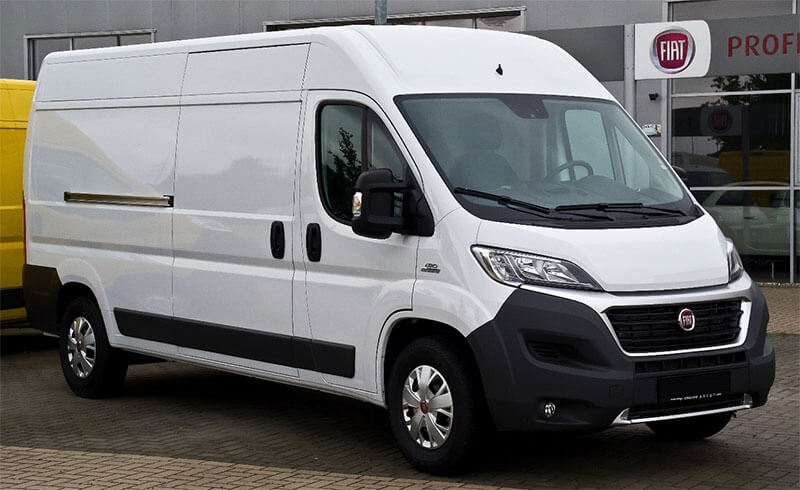
Box van, M 93, Fiat Ducato Kastenwagen 130 Multijet (III, Facelift) – Frontansicht, 13. Juli 2014, Düsseldorf, CC BY-SA 3.0 DE (M 93, Fiat Ducato Kastenwagen 130 Multijet (III, Facelift) – Frontansicht, 13. Juli 2014, Düsseldorf, CC BY-SA 3.0 DE)
The next generation: the box van
Camping bus and box van are often put into the same category, since they are built very similarly. The significant difference is in the size. A box van is basically a sprinter van that has been converted on the inside. The conversion is usually done individually. Much like a camping bus, it therefore offers many creative opportunities. However, it usually offers a lot more space, which can also be a disadvantage. It is not quite as maneuverable in traffic. Depending on the build and road size, this can lead to some difficulty in certain cities.
It does appeal to similar people – freedom loving individualists that like to individually design their motorhome – just with a little more space and comfort. Of course, there are also prebuilt variants. Nowadays, longer transporters (with up to 7 meters length) are used for that purpose. There are some variants with full camping equipment, including a toilet and shower.
- more room than a camping bus, sometimes even with sanitary installations
- height and length make it harder to maneuver in everyday traffic
- usually still very roadworthy with a regular width
- usually enough space to stand up
- only partially recommended for the winter
Motorhomes in a more narrow sense
Of course, the two presented variants are a type of motorhome, no question. They run on a motor, and they function as your home. However, when talking about motorhomes, most people have a specific thing in mind – the types we will present now. We can roughly differentiate between three variants. They are defined by their build, specifically how the driver’s cab is connected to the living area. It can be separated, or fully or partially integrated.
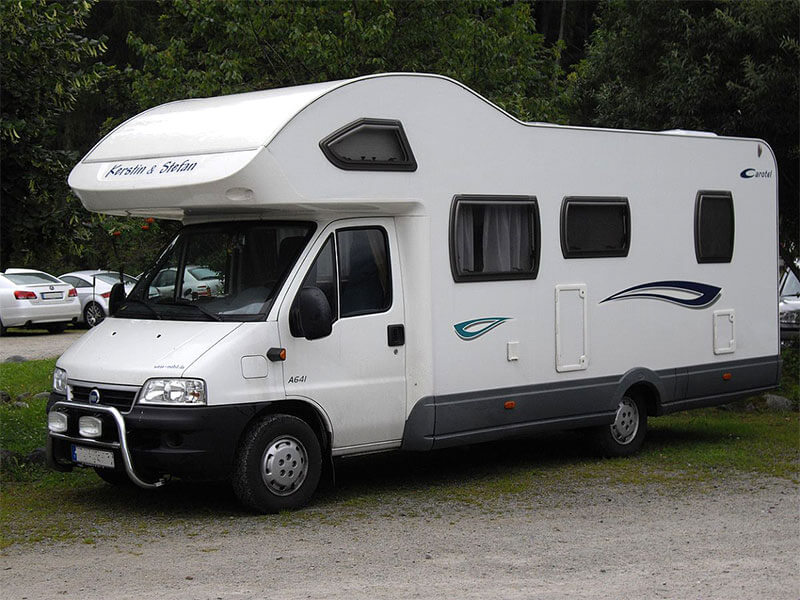
Alcove, Stefan Wiese, Cristall A641, CC BY-SA 3.0 ( Stefan Wiese, Cristall A641, CC BY-SA 3.0 )
The alcove
An alcove motorhome is easily distinguishable from the outside: The alcove above the driver’s cab is easily recognizable and makes it its characterizing feature. In the alcove, a sleeping area is situated (usually a double bed). This optimal use of space makes it particularly popular with families. Usually up to 6, sometimes even 7 people can find a place to sleep in this type of motorhome.
Accordingly, there is also a lot of room for other things. Smaller families or couples can utilize the unused space for storage. Even at full capacity, there is usually enough storage in the shape of cupboards, rear garages, or even double floors. The driver’s cab is usually not heat insulated like the living space. But it can be sealed off from the rest to make this motorhome type winter proof.
Because of its height and specific alcove build, it will eat up a lot of fuel. The size and shape also take some time getting used to for the driver.
- sleeping place for up to 6 people, perfect for families
- a lot of room and storage
- driver’s cab can be sealed off, making it winter proof
- large size needs some time getting used to
- needs a lot of fuel
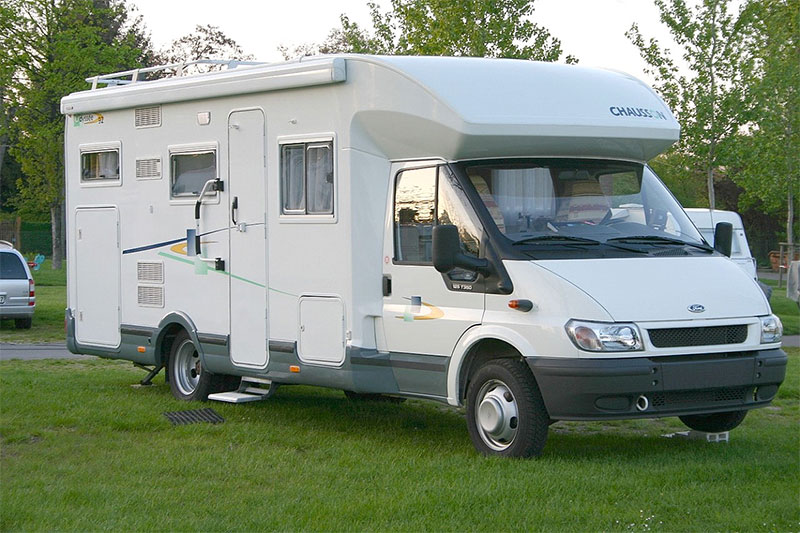
Semi-integrated motorhome, anonym, Teilintegriertes WoMo, CC BY-SA 3.0 ( anonym, Teilintegriertes WoMo, CC BY-SA 3.0 )
Semi-integrated motorhome
Semi integrated motorhomes include those types with a driver’s cab that is partially integrated into the living space. The integration is usually done through rotatable driver’s seats that co-function as a sitting area in the living space. Importantly, those variants have an original driver’s cab.
Semi-integrated motorhomes are available in many versions and are equipped with everything that’s necessary. They are suitable for winter, although some heat gets lost towards the driver’s cab. They are usable for around 4 people and therefor a good choice for couples or smaller families. Compared to models with alcoves that offer more space, they need less fuel and feel more comfortable and familiar to drive.
- low driver’s cab, familiar feeling on the road
- lower fuel consumption
- lots of room and storage for up to 4 people
- winter proof, with some heat loss in the driver’s cab

Integrated motorhome, Variomobil, 2016 3080 9814 VARIO Star 800 MAN TGL 8220, CC BY-SA 4.0 ( Variomobil, 2016 3080 9814 VARIO Star 800 MAN TGL 8220, CC BY-SA 4.0 )
Integrated motorhomes
Integrated motorhomes offer the highest possible comfort. Integrated, in this case, refers to the driver’s cab. They do not have a separate cab, but instead it seamlessly transitions into the living space. They have a huge windshield in the front, much like large buses. This creates a high comfort of living, as the windshield also functions as a panoramic window for the living room.
Integrated motorhomes offer the highest comfort of living, and depending on the model, have luxurious equipment. They are completely insulated and fully suitable for winter. Among them are extravagant luxury models that may even have an oven or a washing machine.
But you only get what you pay for, and integrated models come with a high price. Not only is it expensive on the market, but it has a few further disadvantages. The build of the driver’s cab makes the engine hardly accessible, which increases the cost for maintenance. The front is also not as robust and possibly not as safe in the case of an accident. And depending on the size, the weight of the vehicle may be problematic for certain driver’s licenses. Some even require a truck driver’s license.
- the most luxurious variant with a lot of comfort
- lots of possible extra features
- lots of space for up to 4 people
- fully insulated, totally winter proof
- high acquisition cost
- high maintenance cost
- often requires specific driver’s license
So what is the right type of motorhome for me
As you probably noticed: it heavily depends on whether you are travelling alone, as a couple, or with the whole family. And of course what your preferences are. Everyone has their own taste. Some people love to indulge in the highest luxuries, while others enjoy the simplicity. That’s no question of age, but admittedly, a higher age often comes with a higher need for comfort. A converted Volkswagen bus is ideal for younger people. You can drive straight from a festival to the seaside.
So there is a rough tendency: the more comfort you want, the more you should look for motorhomes in the most classic sense. Of course the number of people you are travelling with plays a big role, too. Everything is possible. An old Volkswagen bus can also fit two parents and two children. It’s questionable if that’s what you really want. It is also important where the trip is going and for how long. Weekend trips with two nights have much different requirements than a two week vacation. Also the driving itself can be a relevant factor. Not only can the fuel consumption be a deciding factor on longer trips, but also your comfort while driving. It boils down to these central questions:
- How many people are you traveling with?
- How long will you be staying?
- How far will you be driving?
- How much comfort do you need?
And of course the budget will always play a role: How much money can you afford to spend? This question may already exclude some types of motorhomes. In terms of price, there may also be some surprising similarities among different models.
Camping is incredibly versatile and so are its people. It is incredibly hard to boil campers down into categories that each have their perfect type of motorhome. It is best if everybody asks themselves the questions presented above, to find out, based on advantages and disadvantages, which type of motorhome fits them the most.
